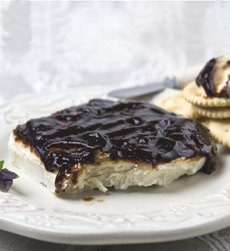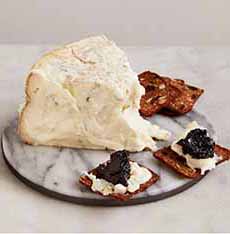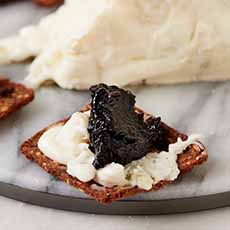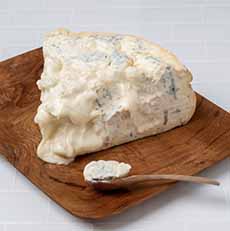Easy Gorgonzole Dolce Appetizer & How It Differs From Gorgonzola Naturale
|
|
In Italy, Gorgonzola Dolce (gohr-gohn-ZOH-lah DOHL-chay), or sweet Gorgonzola cheese (in this case, “sweet” means mild), is often served for dessert with a drizzle of honey and perhaps some figs. But you can turn the tables and serve it as an appetizer that’s easy to make and put out on the coffee table as everyone arrives for dinner. It has a slightly salty aftertaste that is a nice counterpoint paired with the fig jam. Get a slab of Gorgonzola Dolce, a spreadable and elegant version that lacks the sharpness of of Gorgonzola Naturale (there’s more about the latter and its different names below). Spread the gorgonzola dolce with fig preserves or fig jam (the Dalmatia fig spread brand has very good retail distribution). Place it on a platter with crackers—those made with dried fruits and nuts are ideal. You can also pre=spread the crackers for ready-to-grab finger food. Serve your pre-dinner nibble with a fruity red wine, marsala, or port. Or to celebrate a special occasion, serve Champagne! You can also serve this preparation as a cheese course, after the main course. It can be served before, or instead of, dessert. Bella Chi Cha sells a ready-made Creamy Gorgonzola Torta With Fig (photo #1), but you need to live in California to buy it. (Retailer elsewhere: please bring this line in!) Gorgonzola Dolce has only one name. But the firmer version of Gorgonzola has multiple names: Gorgonzola Naturale, Gorgonzola Piccante, Gorgonzola di Monte, and Gorgonzola Stagionato. Gorgonzola is an ancient cheese, dating back to around 879 C.E. It is native to Lombardy, a part of Italy that is also home to Grana Padano, Mascarpone, Provolone, and Taleggio. among others. The blue mold comes from the injection of Penicillium glaucum. Other blues, such as Roquefort, use the Penicillium roqueforti. Gorgonzola Naturale can use either. The choice of mold has to do with differences in color and taste. In the European Union, Gorgonzola has Protected Designation of Origin (P.D.O.) status; in Italy, it is a D.O.C. cheese (Denominazione di Origine Controllata, Protected Designation of Origin). Gorgonzola Dolce is a popular ingredient in risotto and polenta. It can be made into a dip, mixed into vinaigrette, melted on a pizza, or used wherever cheese is called for. Serve it for dessert with berries, figs, pears, peaches, or plums. |
|
|
CHECK OUT WHAT’S HAPPENING ON OUR HOME PAGE, THENIBBLE.COM.
|
||







